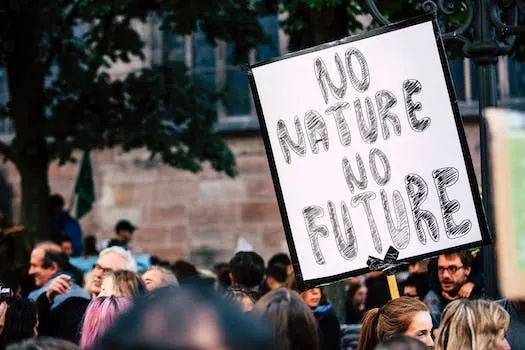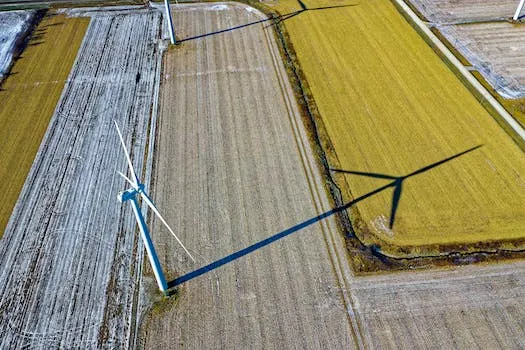
Europe's Great Green Hope: The Largest Rare Earth Deposit in Sweden
The Environmental Impact of Rare Earths
rare earth elements (REEs) are a group of 17 chemical elements that are essential components in many of the most important technologies of our modern world. From smartphones and electric cars to renewable energy technology and medical equipment, REEs are found in products that help us reduce our carbon footprint and fight climate change. However, the production of these elements can have a significant environmental impact. The mining and refining processes used to produce them require large amounts of energy, while also leading to water contamination and the release of hazardous materials into the environment.
The four lightest rare earth elements – yttrium and lanthanum, cerium, praseodymium, neodymium – are used in a variety of high-tech devices such as smart phones, digital cameras, computer hard disks and LED lights. These same REEs also play an important role in oil refining processes as well as national defense applications. In addition to more familiar metals like nickel or copper, many new technologies rely on various rare earth elements for their production.
REEs have become increasingly important for clean energy production due to their use in electric vehicles and other renewable energy sources such as solar panels or wind turbines. They also play an integral part in consumer electronics like laptops or tablets which contain small but powerful magnets made from rare earth alloys that allow them to be thinner yet still perform at high levels with minimal power consumption.
The environmental impact associated with producing these essential materials is undeniable; however there is hope on the horizon with Europe's largest deposit recently discovered near Sweden's border with Norway containing enough resources for decades worth of supply if properly managed responsibly by both countries involved. With this newfound resource comes great potential for reducing our reliance on foreign imports while simultaneously minimizing any negative environmental impacts associated with its extraction process through careful regulation by both governments involved along with industry stakeholders working together towards a common goal: creating sustainable solutions for meeting global demand without sacrificing our planet’s health along the way
The Discovery of the Largest Rare Earth Deposit in Sweden
Recently, a remarkable discovery was made by a group of geologists in Sweden. A 1 million ton deposit of rare earth minerals was found in the north of the country, making it the largest rare earth deposit in Europe. This could be a major game-changer for Europe's green economy and reduce the environmental impact of REE production due to its location within Sweden.
This discovery could be hugely beneficial for Europe's green economy due to its potential to reduce energy-intensive processes associated with REE production while also providing enough resources to meet global demand. With this new development, there is hope that climate change can be tackled more effectively than ever before thanks to this remarkable find from Swedish geologists who have opened up an exciting new chapter in European history!
The Benefits of the Swedish Rare Earth Deposit
The discovery of a rare earth deposit in Sweden could have a range of benefits for Europe. It could help to increase the production of sustainable technologies, reduce the cost of producing them, and create jobs in the green economy. By producing REEs in Europe, it can become less dependent on other countries and ensure that the materials are produced responsibly. According to the ILO's new report, World Employment and Social Outlook, these new jobs will be created by adopting sustainable practices. Critical minerals provide essential building blocks for many modern technologies and are necessary for national security and economic prosperity.
Mining known REEs deposits is not enough to ensure sustainable development; decarbonization of economy is intended to reduce emissions from energy production while creating more green jobs that can help overcome poverty and inequality. The global response to warming of 1.5°C includes transitions in land use, energy systems, urban infrastructure, industrial systems as well as mineral supply which is critical for efficient clean energy transitions given its urgency. The Swedish rare earth deposit has potential to contribute significantly towards this goal by providing access to critical minerals at lower costs with increased sustainability standards compared with other countries such as China which currently supplies much of Europe's REEs needs.
The Potential of the Swedish Rare Earth Deposit
The potential of the Swedish rare earth deposit is immense. Located in Kiruna, Sweden, this deposit could be a major step forward in the fight against climate change. It could help to increase the production of sustainable technologies, reduce their cost and create jobs in the green economy. By harnessing its potential, Europe could become a leader in green technology production and climate change mitigation. The discovery of this rare earth deposit has been hailed as "crucial to enable the green transition" by experts from around the world.
In addition to providing an alternative source for rare earth elements (REEs), mining operations at this site can also be conducted using green technologies that minimize environmental impacts. Plant- and microbe-based remediation methods can help reduce any negative effects associated with REE extraction and processing activities. Furthermore, recycling methods may also be employed to further reduce reliance on new sources of REEs while still meeting clean energy demands for these critical minerals which are set to soar as countries pursue net zero goals according to reports from the International Energy Agency (IEA).
The potential benefits of exploiting this Swedish rare earth deposit are clear: increased production of sustainable technologies; reduced costs; job creation; reduced reliance on foreign sources; and improved environmental stewardship through responsible mining practices and recycling initiatives. If Europe is able to capitalize on these opportunities it could become a leader in green technology production and climate change mitigation (EurActiv). This would represent a major step forward towards achieving global net zero goals while creating economic opportunities for European citizens along with it.
Conclusion
The discovery of the largest rare earth deposit in Europe in Sweden could be a major step forward in the fight against climate change. It could help to reduce reliance on REEs from other countries, increase production of sustainable technologies, reduce costs of producing them, and create jobs in the green economy. This could be Europe's great green hope and a major boost to its efforts to transition to a greener future. However, these green solutions rely on technology-critical elements (TCEs), whose production and disposal can have environmental impacts. The International Energy Agency (IEA) has reported that clean energy demand for critical minerals is set to soar as the world pursues net zero goals. Deposits of these metals are found around the globe but their extraction can come with environmental risks if not done responsibly. To ensure sustainability, it is essential that larger-scale production avoids an increase in environmental impacts while still meeting renewable energy needs for TCEs such as those found at this Swedish deposit. If managed correctly, this deposit could provide Europe with an opportunity to become a leader in green technology and combatting climate change while also creating jobs and reducing costs associated with renewable energy sources.










